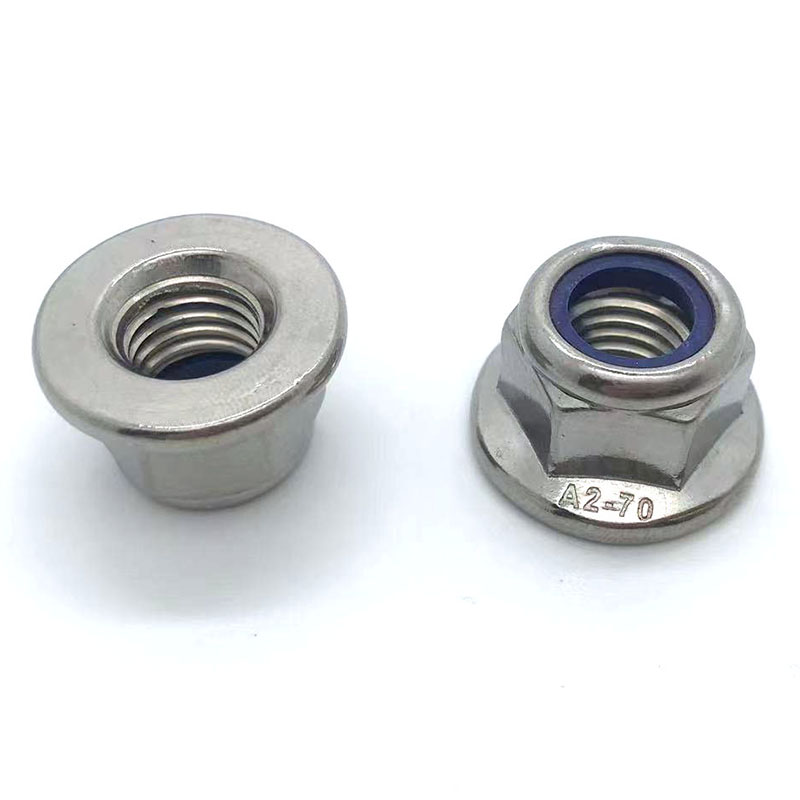Types of Locking Nuts
2024-06-05
A locking nut, also known as a locknut, is a type of nut designed to resist loosening under vibrations and torque. Locking nuts are crucial in applications where maintaining a secure connection is critical, such as in machinery, automotive, aerospace, and construction industries. There are various types of locking nuts, each employing different mechanisms to achieve the locking effect.
Types of Locking Nuts
1. Nylon Insert Lock Nut (Nyloc Nut):
- Description: Contains a nylon collar that grips the threads of the bolt when tightened.
- Usage: Common in applications where moderate resistance to loosening is required.
- Pros: Reusable multiple times, provides vibration resistance.
- Cons: Nylon can degrade under high temperatures and certain chemicals.
2. Prevailing Torque Lock Nut:
- Description: Uses deformed threads to create friction against the bolt threads.
- Types: Includes deformed thread nuts, such as all-metal lock nuts.
- Usage: Suitable for high-temperature environments and heavy-duty applications.
- Pros: High strength and durability, reusable.
- Cons: Can be difficult to install and remove, requires more torque to tighten.
3. Castle Nut (Slotted Nut):
- Description: Features slots (notches) on one end that align with a hole in the bolt, secured with a cotter pin.
- Usage: Commonly used in automotive and aerospace applications where the nut must not loosen.
- Pros: Extremely secure, prevents complete loosening.
- Cons: Requires a cotter pin, making installation more complex.
4. Serrated Flange Lock Nut:
- Description: Has a serrated flange that bites into the surface material to prevent loosening.
- Usage: Ideal for applications where a larger bearing surface is needed.
- Pros: Provides excellent resistance to vibration and loosening.
- Cons: Can damage the mating surface, not suitable for all materials.
5. Keystone Lock Nut:
- Description: Features a keystone-shaped insert that deforms under torque to lock the nut in place.
- Usage: Often used in applications requiring frequent adjustments.
- Pros: Adjustable and reusable.
- Cons: Lower locking strength compared to some other types.
6. Two-Piece Lock Nut:
- Description: Consists of two separate pieces that create a jamming action when tightened.
- Usage: Used in heavy machinery and structural applications.
- Pros: High resistance to vibration and loosening.
- Cons: More complex to install and may not be reusable.
Applications of Locking Nuts
- Automotive Industry: Used in engine assemblies, suspension systems, and chassis components to prevent loosening due to vibrations and thermal cycling.
- Aerospace Industry: Critical in maintaining secure connections in high-stress, high-vibration environments such as aircraft and spacecraft.
- Machinery: Ensures bolts remain tight in industrial machines subject to heavy loads and continuous operation.
- Construction: Secures structural components, such as beams and columns, providing stability and safety.
- Electronics: Used in assemblies where even slight loosening can cause malfunctions or failures.
Advantages of Locking Nuts
- Vibration Resistance: Designed to stay secure even in environments with constant or heavy vibrations.
- Enhanced Safety: Prevents critical failures by ensuring fasteners remain tight.
- Reusable: Many types of locking nuts can be reused without losing their locking capabilities, though this can vary by type and application.
- Versatile: Available in various materials and finishes to suit different environmental conditions and applications.
Considerations for Use
- Torque Requirements: Some locking nuts require higher torque for installation, which should be considered in the design and maintenance processes.
- Temperature and Chemical Resistance: Material choice is crucial for applications exposed to high temperatures or corrosive environments.
- Reusability: While some locking nuts can be reused, others may lose their effectiveness after the first use.
By understanding the various types of locking nuts and their specific applications, you can ensure the right choice for your project, maintaining the integrity and safety of your assemblies.



